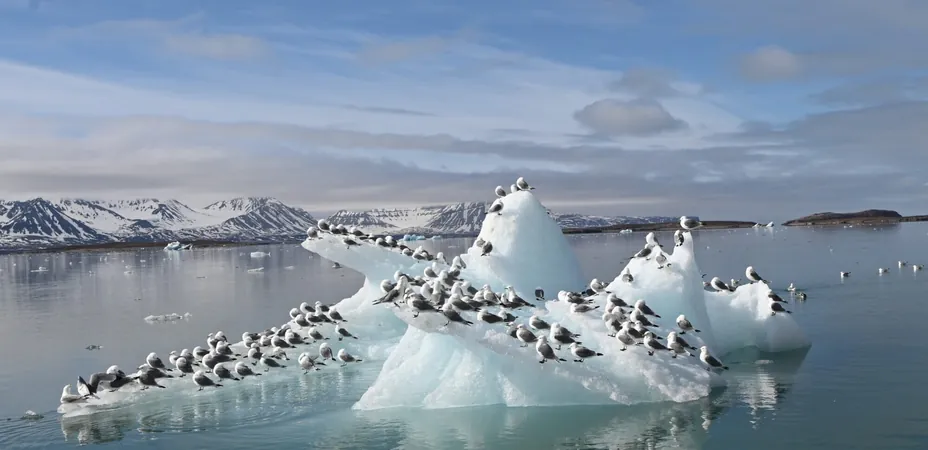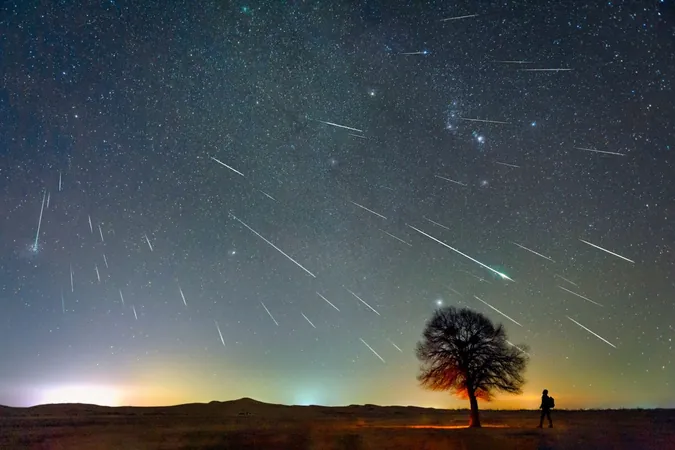
Shocking Mercury Levels Detected in Svalbard’s Seabirds: A Cause for Concern?
2025-04-08
Author: Rajesh
Shocking Mercury Levels Detected in Svalbard’s Seabirds: A Cause for Concern?
Recent studies have unveiled alarming findings regarding the health of seabird populations in Svalbard, with researchers detecting dangerously high levels of mercury that surpass the threshold known to negatively impact these majestic creatures. This discovery signals a potential crisis for Norway's coastal wildlife as many seabird species grapple with declining numbers.
Dr. Silje Lundgren, a researcher at NTNU's Department of Biology, highlighted the serious implications of mercury contamination, stating, "We don't know what effect this has on the population level, but we know that mercury affects reproduction, behavior, and survival." This heavy metal, notorious for its toxic properties, poses risks not only to avian life but also to humans, presenting a threat to hormonal and immune systems, as well as causing neurological damage.
Feather-Testing Findings
As part of her master's thesis, Lundgren examined various heavy metals and environmental toxins in Svalbard’s avian population. During her 2017 expedition to Kongsfjorden, she collected feather samples from black-legged kittiwakes and Brünnich’s guillemots. The results were disheartening; mercury levels in these birds were alarmingly higher than previously recorded in Arctic seabird studies, especially in kittiwakes, which revealed levels exceeding those known to affect reproductive health.
Lundgren noted that although high mercury concentrations can sometimes be tolerated by individual birds, the overarching struggle for survival and reproduction among seabird populations makes mercury one of several contributing factors to their decline.
Seabird Population Plummets
Geir Wing Gabrielsen from the Norwegian Polar Institute has closely monitored Norwegian seabird populations for decades and concurs with Lundgren's assessment. He stressed that seabird populations are diminishing at a faster rate than other avian groups. Notably, data from Norway's national monitoring program, SEAPOP, indicates that 13 of the 35 seabird species being monitored have seen a staggering reduction of more than 50% in the past two decades.
The challenges these seabirds face are manifold. Climate change, pollution, habitat loss, increased hunting pressures, and the emergence of diseases like avian influenza are all contributing to their precarious situation.
Pollution from Afar and Local Effects
Interestingly, researchers reveal that the pollution impacting Arctic wildlife primarily stems from industrial activities in Asia, particularly coal consumption. Gabrielsen explained that when pollution-laden air masses move northward, they deposit harmful pollutants, including mercury, into the Arctic ecosystem. As glaciers melt, they release these trapped toxins into the environment, further exacerbating the plight of Svalbard’s seabirds, whose diets have shifted due to changing food availability sparked by climate change.
These seabirds, once reliant on polar cod, are now consuming Atlantic fish species like herring and krill, causing a worrying increase in their mercury levels. Gabrielsen pointed out the correlation between rising ocean temperatures and heightened mercury concentrations in the birds, indicating that their new dietary choices could be inadvertently poisoning them.
A Call to Action Amidst Growing Risks
The Arctic Monitoring and Assessment Program (AMAP) reported that in 2015, Asian countries contributed to half of the world’s mercury emissions, and many experts emphasize the urgent need for these nations—especially industrial powerhouses like China—to take active measures towards emission reductions.
The NTNU researchers are actively engaged in a multi-faceted project alongside the Norwegian Institute for Nature Research to explore the interactions between pollutants and climate change on Arctic seabirds. One of the primary contaminants under scrutiny remains mercury, as researchers aim to track the trends of these toxic substances in various seabird populations across Norway and Svalbard.
The escalating mercury crisis not only raises concerns for wildlife but also serves as a poignant reminder of the far-reaching impacts of global industrial practices on some of the planet's most vulnerable ecosystems. We must prioritize the health of our environment and take decisive steps to protect these endangered seabird populations before it’s too late.



 Brasil (PT)
Brasil (PT)
 Canada (EN)
Canada (EN)
 Chile (ES)
Chile (ES)
 Česko (CS)
Česko (CS)
 대한민국 (KO)
대한민국 (KO)
 España (ES)
España (ES)
 France (FR)
France (FR)
 Hong Kong (EN)
Hong Kong (EN)
 Italia (IT)
Italia (IT)
 日本 (JA)
日本 (JA)
 Magyarország (HU)
Magyarország (HU)
 Norge (NO)
Norge (NO)
 Polska (PL)
Polska (PL)
 Schweiz (DE)
Schweiz (DE)
 Singapore (EN)
Singapore (EN)
 Sverige (SV)
Sverige (SV)
 Suomi (FI)
Suomi (FI)
 Türkiye (TR)
Türkiye (TR)
 الإمارات العربية المتحدة (AR)
الإمارات العربية المتحدة (AR)